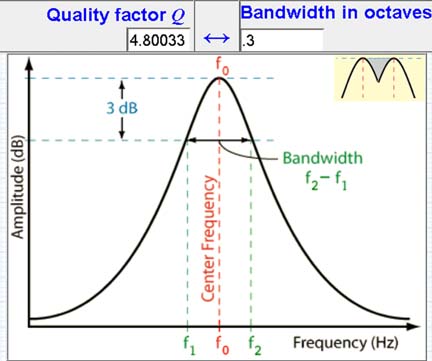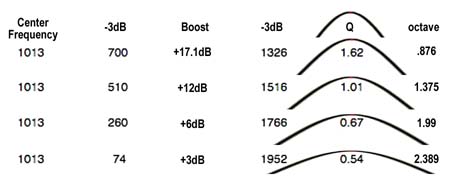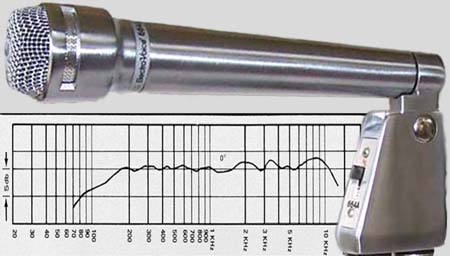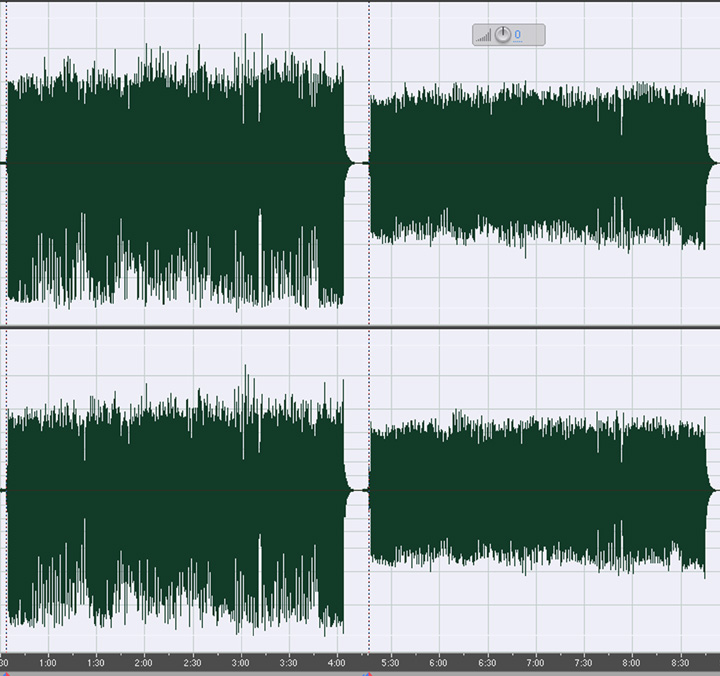AE-240 Spring 2014
Instructor: Eddie CilettiWeek-9: Jason Peterson Band (name?)
raw Song-3 (raw) proc Song-3 (proc-1) Song-3 (proc-2) Week-8: Honky Tonk Overdubs
Honky Tonk Edits (raw) Honky Tonk Edits (proc) Week-7: Ross Kleiner and the Thrill
Thank you all for your help on this recording project! You all pitched in and got the job done - and done well, I might add. This is by far, the best Studio D recording EVER!!!
I need you to e-mail about your participation in this session in as much detail as possible.
The cover song links are below. You will have to e-mail me for the original material as per Ross's request to not post it on FB. Feel free to thank Ross - and friend him and his band mates - THEY made it happen!
raw proc hipShake_raw_AJ-1 hipShake_proc_AJ-1 SlipSlide_raw_AJ-2 SlipSlide_proc_AJ-2 stones-full_raw stones-full_proc stones_raw stones_proc Week-6: 24 track Mix Session in Studio-3D
We covered alot of territory...
- Studer A-827 basics, including alignment and remote control
- Room modes (constructive and destructive), finding bass holes and bumps, and the golden ratio
- When mixing, the emphasis should be on, uh, 'MIXING,' and not EQ-ing yourself into a sonic sand-trap. Sure, EQ to 'fix' the most egregious tracks - filtering (removing) over boosting - but focus your attention on dynamics.
- I demonstrated the importance of POLARITY as it affects
- I have always felt that Trident mid-range EQ is too broad to cut drum rings and too narrow to boost instruments other than drums. I know what I like to use in terms of Q and i am in the process of do a little research to correlate musical bandwitdth - in octaves - versus Q and Quality Factor by RANE. That article includes an Excel Spreadsheet. Another link (below) has a calculator.
Click on the image to link to the online calculator.HINT: You'll have to scroll down to find it.
Enter data on either side of the < -- > sign.
The comparison is currently ‘frozen’ to show that 1/3 octave bandwidth is a “Q” of nearly 5, which is a too wide to cut (a drum ring)
and too narrow to boost (vocal, guitar, keys)For more ‘musicality,’ try offsetting two Series-80 mid-band EQsinstead of using just one, see pastel inset (left).
Trident A-Range, courtesy Geoff Daking I applied these concepts to our rough mix of LIFE IS A CARNIVAL. The mix translated well on several systems, fromt he mono tape machine speaker to the tech room stereo, my minivan, MMI studio B, my car and my control room. The only thing I woudl have liked to do is EQ the fuzz guitar at the end and feature it more prominently.
Raw Carnival Proc Carnival Crunchy Cake Excerpt DID EVERYONE...
Week-5: OD in the Atrium!
- do the class eval survey on your iPad and let me know ASAP that you did. Keep in mind that I have 2 hermit crabs, one tarantula and 4 tropical fish to feed...
- get your emails up to date and consider your mid-term 'exam' to be an overall assessment of the first six weeks - as in, I am prepping you to start writing for week-6 sooner than later.
I was truly surprised that we didn't get kicked out of the Atrium and was totally expecting to move to Studio D. It was a great experience for me and I hope you also enjoyed the process. It was an interesting combination of live performance and overdub - with an emphasis on dynamics and placement. In the end - the mix - reveals interesting textures and I am curious to know what you think about how the mixes play. How would you describe the sound we got: lo-fi? vintage? I know it's not 'modern' by mass-produced military-industrial-complex pop standards, but does it approximate a modern artistic aesthetic?Sadly, the mixes to tape were too hot - my bad, as I set the levels. Like our test recording in the atrium, we should have listened back before proceeeding. While the track didn't need compression (to bring out even more ambience), a little peak limiting would have helped.
That said, I ran off the first two mixes to CD - let's call them OD-1 and OD-2a - just as Graham had done to tape. I then made some adjustments and ran OD-2b - using a slightly different EQ on the OD and the bounce. On the second performance, Kevin was either a little further from the mic or not singing as strongly, so it was a bit of a struggle to have the voice be forward enough without completely washing out the mix in Atrium Ambience.
I know we didn't achieve 'perfection,' but I hope everyone gained a heightened awareness of how, in essentially a live 'one-mic' recording, the extra effort makes a big difference. Sure, more tracks and more mics would have given us more control, but there is an energy with everyone playing together and working to achieve a balance.
Below are the mixes, raw and procesed, including the end jam. Please listen to all, hopefully on multiple systems, and report.
OD-1 Raw OD-2a Raw OD-2b Raw EndJam Raw OD-1 Proc OD-2a Proc OD-2b Proc EndJam Proc Week-4: FLanging exercise and Bass Overdub
Flanging is a familiar sound that has been used to enhance the 'emotional' impact of a song since 1959. It is the result of two identical tracks on two tape machines that start a few milliSecons (mS) slightly out of sync. The sound will appear to come from the machine that is leading. The leading track is gradually timeshifted into sync - in the analog domain - by dragging a finger on the tape reel flange of that machine until the 3D image pans to the opposite machine, literally 'panning with time.' We will record the two tape tracks in 'stereo,' but played back in mono. The resulting 'Flanging' effect is technically called comb filtering.We can use the flanging technique to fly in and manually sync overdubs. That was the plan for Week-4 but the CDs made for class didn't play in the CD player.
For future reference, any CDs brought to class have to be "REDBOOK," as in, formatted to be playable like a commercially released music CD. What I got from both Graham and Andy were DATA discs.
We opted instead to use the flanging effect for the song, overdub a Nashville Tuned Acosutic Guitar, bounce to mono and then overdub bass. Austin Jones, from last quarter, was kind enough to sit in.
After everyone left, Steve helped clean up the room and they he whipped out his harps - I liked what he was doing, so we set up again and did a test recording. I'd like to include that as part of our Atrium overdub next week.
Please listen to both raw and 'proc,' versions and include thast in your weekly report. 'Proc' is what I call 'mastering.' I thought the track sounded pretty good and I applied a gentle, 4-band processor to sweeten it up a little. See what ya think...
1959 Pictures Of Matchstick Men 1967 1972 2014 THE BIG HURT Pictures of Matchstick Men 2010 Listen To The Music Raw Cake w/Bass, Vox and Harp wiki wiki wiki Proc Cake w/Bass, Vox and Harp
Week-3: The CAKE Song, sans Bass. Andy and Graham will recut the bass and then provide a CD with the track panned to one side and the bass on the other. one Week-4, the CD will be bounce to 2-track tape and then flown into the 4 track, using the same technique used to create flanging. After everyone gets a shot at that, we will bounce and overdub.
TechRoom
Recording Gear
Overviewsample 4-track
(vocal OD)
winter 2010Sample 4-track
(live)
winter 2014PatchBay
OverviewMiscalibrated
VariMu Limiter
sample
(Billy Taylor)Week-2: Basic Editing Part-2
Digital Vs Analog
- Drum editing session, introduction to tape recorder alignment, analog vs digial listening session, 40Hz acoustic hole experiment.
- Please read Bass Management for all Formats, the techniques are equally useful to both analog and digital recording.
- We watched IT WAS A VERY GOOD YEAR, recorded at Bill Putnam's United Recording Studio in Hollywood.
HOMEWORK
Import both of the files below into a session and alternately solo each one. listen carefully on headphones and try to describe the differences.Week-1: Basic Editing Part-1
Full immersion into tape recorders, basic layout key components and functions. Please refer to class index page for various articles and sound samples from previous class, INCLUDING the RCA Reference Recording Manual from 1940.



